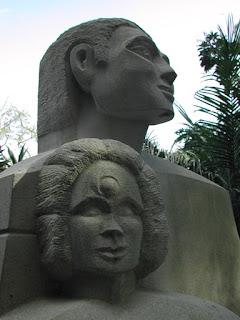City Hall Leadlight
When people think of Brisbane City Hall, the immediate things which spring to mind are its facade featuring the tympanum of the pediment, the Museum of Brisbane, or the spectacular main auditorium. However, if you wander around the hallowed halls, you can come across other, more subtle pieces of Brisbane's history. These include the magnificent leadlight feature windows which can be found in the small entrance halls off Adelaide and Ann Streets on the first floor level. These were designed by artist William Bustard.
William Bustard (1894-1973) is renowned in Australia not only as a painter, but also due to his stained-glass and book illustration work. Born in England in 1894, he migrated to Queensland in 1921. At that time he was already well versed in stained glass work and over the intervening years through to the second world war he did work in many of Brisbane's churches, along with this piece in City Hall. His artworks can also be found at the Queensland Art Gallery.
The history of City Hall has been well documented, having been opened in 1930, but with the idea and foundation stone being laid in 1913. I think that William Bustard would not have worked on this until the late 1920's. What I particularly love about this piece is I believe it would have been reflective of the view one would have had from Adelaide Street back down to the Brisbane River at that time. The crest with the phrases City of Brisbane and Conjunctis Viribus (With united powers) emblaze the sky, and the wealth from the land and growing industry are also depicted.
Cheers, I Love Brisbane, Wes.
Click Here for the Google Map Reference for this post.
















